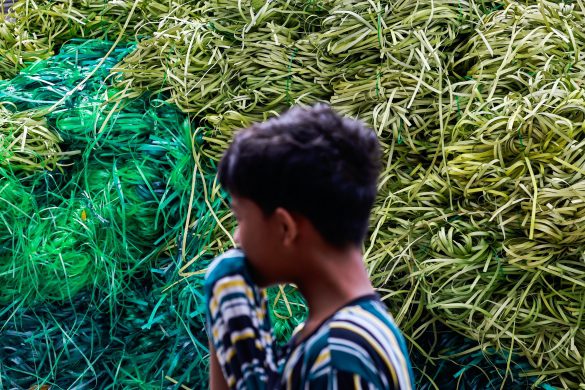Food treasures of the wild in peril – But try the bush-tailed porcupine (hulepindsvin)
ROME, 7 September 2009: With food, poorer is often richer. Onion soup was not created by any celebrity chef. Nor was apple pie (æbletærte).
But now comes the news that remote tribes in dense tropical forests or frozen polar wastes are keepers of a vast treasurehouse of healthful, nutritious foods – many with extraordinary properties (egenskaber) – that more affluent societies can only envy.
This is among the main findings of a recent book, „Indigenous Peoples (urfolkenes) Food Systems‟, co-published by FAO and McGill Universitys Centre for Indigenous People’s Nutrition and Environment (CINE).
Says Barbara Burlingame, FAO Senior Nutrition Officer, Nutrition Assessment and Nutrient Requirements: – This book shows the wealth of knowledge in indigenous communities, in diverse ecosystems, and the richness of their food resources.
Receding habitats
The bad news is that as wild habitats recede (skrumper ind) under economic pressures and globalization increasingly standardizes lifestyles, these native foodstuffs are vanishing fast – together with the diets that once kept tribespeople healthy and trim (i form).
Nonetheless, in the Karen community of Sanephong, close to the Burmese border in Thailand, 661 inhabitants still get to choose from 387 food species including Wax gourd, Jack fruit and Tree Ear, the books researchers found.
Local cuisine featured many mouth-watering specialities not readily found at ones favourite local restaurant, such as painted bullfrog and bush-tailed porcupine.
Nature has clearly been generous to the Karens, who enjoy 208 species of vegetables and 62 different kinds of fruit.
But even in an arid, drought-prone zone such as the territory inhabited by Kenyas Maasai tribespeople, 35 different species of herbs (urter), leafy vegetables and wild fruits are documented, while in Canadas frozen north, the Inuits of Baffin Bay boast 79 different wildlife foods including caribou (rensdyr) meat and ringed seal.
Four crops
By comparison, diets in industrialized western countries are far more restricted, depending heavily on just four commercial crops – wheat, rice, corn, and soy – often consumed as processed foods or, via animal feed, as meat.
Even more alarming are FAO estimates that about three-quarters of the genetic diversity once found in agricultural crops has been lost over the last century.
Traditional foods not only generally taste good but also frequently contain very high levels of micronutrients.
In Mand, a hamlet (flække) on the Micronesian island of Pohnpei, Utin Llap, one of the 26 local varieties of bananas contains huge amounts of Beta-Carotene – more effective in combating Vitamin A deficiency (mangel) than any pharmaceutical preparation.
Of the 12 indigenous groups studied in the book, the percentage of adult dietary energy obtained from traditional food varied between 93 percent for the Awajun of Peru, among whom obesity is almost non-existent, and 27 percent for Mands 500 villagers who now face a series of diet-induced health problems.
Diet disorders
Says Burlingame: – The shift away from traditional food resources to commercial, convenience foods is often accompanied by an increase in diet-related disorders like obesity (fedme), diabetes (sukkersyge) and high blood pressure.
It is therefore important to preserve such resources, not only for the indigenous groups concerned, but also as an important store of biodiversity for all nations.
A first step, says Burlingame, is to conduct more research to better understand the importance of these foods nutritionally. Indigenous peoples take pride in their local foods when they know how unique and beneficial they can be.
A second step is to help them find wider markets, locally and farther afield, not only for their food produce, but for the medicinal plants they often have in abundance.
But some of this could already be happening.
Among the Inuit, who have developed an appetite for frozen pizza, spaghetti and carbonated soft drinks, 31 percent of total energy came from traditional food sources a decade ago, whereas in 2006 the figure had risen to 41 percent. This indicates a return to tradition.
And it could be that in the not too distant future the choice for dining out will no longer be between national cuisine and ethnic but feature a new entry: „How about indigenous tonight‟.
Indigenous Peoples Food Systems is on sale through the FAO Online Publications Catalogue on
http://www.fao.org/icatalog/search/dett.asp?aries_id=110290&ch_lang=en
Kilde: Pressemeddelelse fra FAO – FNs Organisation for Fødevarer og Landbrug















